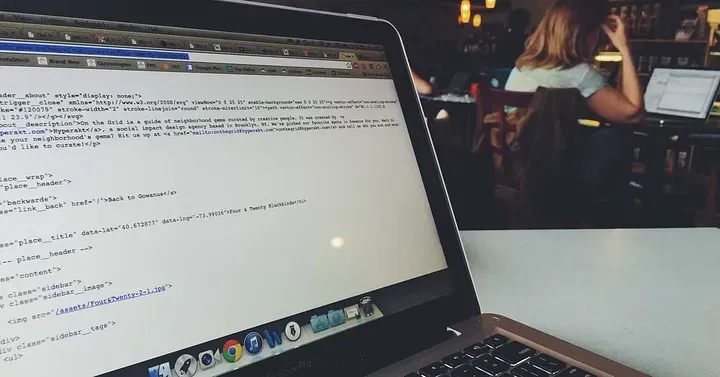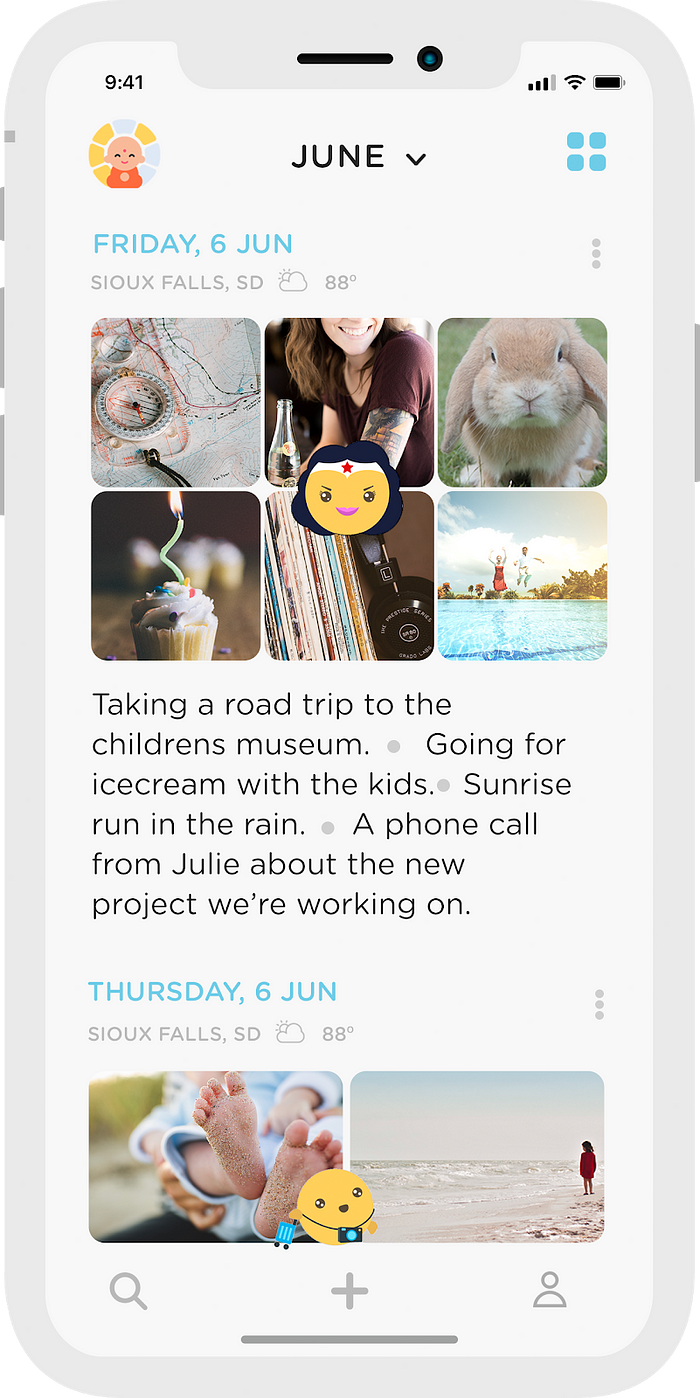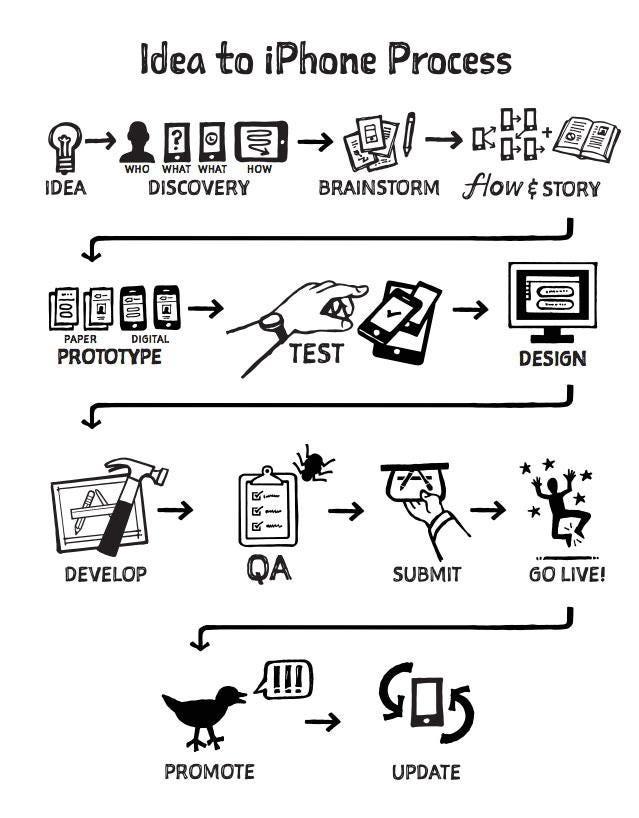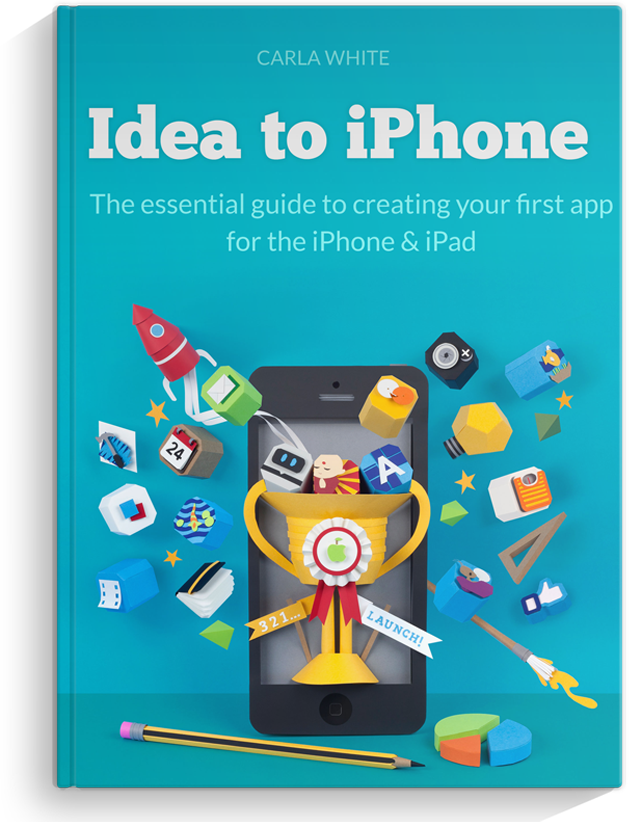
How You Can Make Apps Into Profitable Lead Machines
In early 2008, when I got my first iPod touch, I knew instantly that I had to create an app for that darling little device. I wasn’t a programmer, had never used a Mac, and had a measly $500 budget. In fact, I didn’t even have an iPhone, just my iPod touch. But none of that was going to stop me. A few months later my app stormed into the top position on the App Store and was hailed in major news publications around the globe.
If you had peered in my window during those few months, you would have seen me huddled at my computer, absorbed in design tools, messaging developers, and fumbling with Xcode — all before going to my day job. I was determined to figure out how to create a hit app on a shoestring budget, without learning how to code.
It wasn’t easy, but I managed to teach myself how to do all the designs, outsource the development, and grab people’s attention — all on a budget that paid for itself by noon on the first day of sales. I’m the first woman to launch a solo app and my apps have since graced the front page of USA Today, been featured on Good Morning America, New York Times and Oprah and been praised in the media from Fargo to France.
Now I’d like to share everything I learned with you, so you can do it too.
If I Can Do This, So Can You
When I started, I owned a flip phone, had no programming skills, and worked at a job so remote; the building was in the middle of cornfields. For the longest time, blogs or books for app developers simply didn’t exist. And because I was financing everything myself, I had to hold down my day job, too.
Over the years I have witnessed firsthand how this industry and the tools to create apps are evolving at an insane pace. App designs continue to get better and the competition fiercer. Still, my overall formula for creating apps remains the same. But the formula alone won’t produce successful apps. It also takes drive and courage. While some are dreaming of success, the real winners wake up and work hard to achieve it.
The Truth About Apps
Some say the App Store gold rush is over, yet I’m still witnessing indie developers making a killing in app sales with one hit app after another. They’re breaking all the rules and smashing some of the biggest plays out of the park. Why? Because small shops have less to work with, so they have to be creative and resourceful. They have less, so they have to use it wisely. It all boils down to the 80–20 rule.
An Italian economist named Vilfredo Pareto came up with the 80–20 rule or the law of the vital few. It states that 80 percent of the effects in a given sphere come from 20 percent of the causes (http://en.wikipedia.org/wiki/Pareto_principle). For example, the richest 20 percent of the world’s population control 80 percent of the world’s income. In business, 80 percent of the complaints come from 20 percent of the customers. Microsoft discovered that by fixing 20 percent of the bugs, 80 percent of the issues would be eliminated.
What does this have to do with app success? Let me tell you.
Ever since the App Store first launched, I have met some truly talented app developers who threw in the towel because their incredible apps earned them peanuts while really mediocre apps were climbing the charts. In their frustration, they gave up. As an outsider, I noticed that they all made the same big mistake.
They focused 80 percent of their time and energy into the development when it accounts for only 20 percent of the app’s success. They got too engrossed in the coding part of the project, pouring their efforts into the features and functionality, believing that if they build a feature-loaded app, people will come. The app will simply sell itself. When the App Store first opened, organic growth was possible, but in today’s market it takes more than that to get your app noticed among the millions of others.
The 80 percent of your app’s success comes from putting your elbow grease into a meticulous design and a well-thought-out marketing strategy.
The steps to creating an app are pretty straightforward, but let’s get one thing clear right away. You’re not just building an app. You’re producing a product that people want to download, use a lot, and tell their friends about. Your success hinges on focusing your time and energy on two critical tasks:
1. Creating a simple and elegant solution.
Marketing your app as soon and as often as possible.
Did you notice that coding isn’t on the list? This might leave some developers up in arms, but the truth is it’s not the core to successful apps. A well thought out design and a strong marketing strategy are the crux of any successful app.
Obviously, I’m not suggesting you can do without coding. But if you spend most of your time and budget on coding grand features and leave the design as an afterthought, people won’t be drawn to your app because it’s confusing to use or as dull as cardboard. Likewise, if you wait until your app is almost complete before you start promoting and connecting with your audience, most people won’t even know your app exists. You need to focus on both the design and marketing throughout your project to make it work.
A halfhearted approach to either one of these efforts means you’ll be begging your family at the next reunion to download your app.
You don’t need big budgets to apply the 80–20 rule. There are countless things you can do yourself that will directly contribute to 80 percent of your app’s success. You can do the initial designs, build relationships with influencers, media, and bloggers, and grow your list. These tasks don’t take any special skills or talents. They just take time and dedication. Pour your heart into your app project, and the rewards are beyond what you can ever imagine. Remember, if you can draw a circle, you can design an app. And if you can tell a story, you can build an audience.
A Glance into the App Development Process
To keep things simple, this book is organized to reflect the main phases of an app project. It aims to shorten development time and keep costs low, with the goal to start earning within a few months.
To do that, there is one important rule to remember: Go for the quick wins.
Break the development process into short phases so you can get things done and move on to the next thing. This approach keeps the momentum going and keeps your project from fizzling to a slow death.
The process can be broken out into six overlapping and repeating phases. Some phases, such as development and promotion, never truly end. In fact, promotion actually kicks off before anything else and is part of every phase of the project. Figure 1 provides a brief overview of the process that will be discussed in more detail throughout the book.
Figure 2: The development process
* Conceptualize — Idea, Discover & Brainstorm. Decide exactly what your app does and who it’s for. Narrow down your target market and mold your app idea into something they want.
* Design — Flow & Story, Prototype, Test, Final Designs. Establish a clear blueprint of the features, screen layouts, and navigation. Test your designs and build on the ideas of others, then polish it all off with a design tool.
* Develop — Code & QA Test. Create an app that is efficient, bug free, and well tested.
* Distribute — Submit & Go Live. Send the app to Apple with images and a description for approval. Execute a launch strategy that gets Apple’s and the media’s attention.
* Promote. Market the heck out of it while you’re building your app as well as after it’s on iTunes.
* Maintain — Update & Expand. Support your customers as well as your app by working on new releases. Expand to new markets and platforms.
The Secret To App Success
What I’m about to share with you isn’t a get-rich-quick scheme in which you quickly create an app and then live in the comforts of your private island, sipping cocktails out of a coconut shell. Creating successful apps takes hard work, and I’m not about to sugarcoat the process. But if you have the drive and passion, the rewards can be phenomenal.
Your app can be an extraordinary and powerful lead magnet, driving thousands of emails to your list daily. An app’s powers go way beyond a book, pdf, video or course. If strategized correctly, your app will be used daily and give your audience superpowers they never knew they had. Your app will create such loyalty, that the follow-up funnels practically sell themselves.
* You app idea must be extremely simple — I’ve been creating apps since they first hit the market, and one thing I know is big features doesn’t equal big downloads. Your app needs to do one thing very well. My app, for example, is a very powerful Gratitude Journal, efficiently letting my audience write down their life’s best moments each day. There’s no “social feed”, chat, or buddies. These features are complex and aren’t needed for my audience to achieve their goals.
* Your app needs be addictive — Most apps get deleted after the first use. That’s because the producers failed to make the app addictive. Your customers need to get so use to using their app, that if it suddenly disappeared, they would notice. Don’t get tripped up in thinking it has to be at the level of Facebook or Clash of Clans. Some apps are just handy like AirBNB or Uber. You might not use these apps for weeks, but when you need them, you’re happy they exist. My Gratitude app, for example, is designed to be used once or twice a day. Even still, it’s up to me to make Gratitude addictive to the user. In other words, the addiction needs to be designed into the features so they trigger different chemicals in the brain.
Gamifing your app with leaderboards, points, levels and rewards. Give your audience a reason to want to open your app and use it over and over again. This could be an entire article in itself but if you want to learn more, I suggest the book “Hooked: How to Build Habit-Forming Product” by Nir Eyal.
* Your design need to be simple and usable — Apps get used in short bursts interrupted by text messages, phone calls, and the changing traffic light. For your app to be successful, people must be able to understand exactly what it does in 9 seconds or less. We should “get it” without having to invest any extra brain cells thinking about it. If your app confuses people, they get frustrated, lose confidence in you, and move on to the next app. Even worse, they’ll leave bad reviews on the App Store so your app never gets out of the starting gate.
* Your app’s success is inversely proportional to your target market — Pinpointing a target audience often trips up entrepreneurs, who find it irresistible to be all things for everyone. But the truth is that before deciding exactly what your app will do, it’s important to think clearly about whom you’re building it for. It’s the first step in creating an app that people want.
It’s tempting to try to build an app that will appeal to everyone, hoping it rewards you with a huge customer base. It won’t. You’ll end up overloading your app with too many features in a vain attempt to please everyone, sinking your app to the bottom of the iTunes Store. Not even Coca-Cola sells to everyone.
* You’re not just creating an app, you’re putting on a show — Don’t make the mistake of all the other app developers who start thinking about marketing after the app is developed. It will feel like you’re trying to win the Tour de France on a tricycle. You’ll be desperately trying to keep up rather than riding the wave of excitement in your shiny new app. You need to start your marketing before anything else.
As soon as you have a good notion about your app idea and features, get the word out and crank up the buzz machine. Sure, you haven’t designed anything yet. You might not even know what you will call your app, but you can start connecting with your tribe, share your passions, ignite the excitement, and make some new friends and grow your list.
Turning Apps Into a Leads Machine
Throughout my app career, I never received any funding or advertised, yet my app stays in the top charts and my list continues to grow with loyal fans. There’s a magic to making this happen and to truly pull it off, your main goal has to be helping your customer succeed, not to profit. If it’s the latter, your customers will see right through you and all your efforts will be wasted.
* Give them superpowers in exchange for their email — First impressions are hard to change, so don’t make the mistake of asking your audience to fork over their email just to see your app. Surprise and delight them first, then give them a compelling reason to create an account. With my app, Gratitude, my customers get to store their journals in the cloud, so if they ever delete the app or change phones, their journals are still there waiting for them in a safe place. Storages, customizations, and favorites are all features that don’t require a log in, so you strategizing this piece of your app project is essential.
* Welcome them and overdeliver right from the gate — When someone gets my app and creates an account, that email goes straight into Mailchimp and they receive a welcome message introducing myself and letting them know I’m going to do everything I can to help them. This is the start of an 11-day soap opera series that unfolds my story, gives them additional resources and tools, and indoctrinates them into my cult-ure.
* Sell your app rather than give it away — As tempting as it is to grow your list quickly with a free app, you need your customer to pull out their wallet and invest in your business. If your app is free, offer in-app purchases for extra storage, features, or content. Don’t make your customers pay for removing ads. This doesn’t create the loyalty needed through an app magnet.
Essentially, you want to attract the right customers with your app. If it’s free of filled with ads, you’re going to attract “free-ple”; people who don’t pay for anything.
* Change their life and they’ll love you — Rather than thinking about your app idea as a list of features, consider the benefits it brings to your audience. For example, people want apps that give them superpowers, help them solve a problem, or simply let them unwind. If the basis of your app is to give people more of what they want, or less of what they don’t want, you’re onto a winning idea. This is why software creates a loyalty that goes beyond a book or video. It’s always in front of your customer, constantly improving their lives on a daily basis.
Reach Out
I encourage you to get in touch and ask questions. Apps aren’t rocket science and don’t have the break the bank. But knowing the process is essential to success.
You can purchase my book “Idea to iPhone: The essential guide to creating your first app for the iPhone and iPad” (Wiley 2013) which is easy-to-follow, step-by-step guide teaching you exactly what you need to know to bring your app idea to life without a lot of cash or coding. It’s available on Amazon or at ideatoiphone.com
Ready to grow?
Start your 14-day free trial with Funneltopia® today, risk-free, no strings attached.
Ready to grow?
Start your 14-day free trial with Funneltopia today, risk-free, no strings attached



Products
Products
Resources
Partners
Company
Contact Us
304 S. Jones Blvd #7995
Las Vegas, Nevada, 89107
Sales: +1.805-7-FUNNEL
Billing: +1 855-888-0965
© Funnel LLC 2025
Funnel LLC is not affiliated, associated, authorized, endorsed by, or in any way officially connected with Google, Google.com or any of its subsidiaries or its affiliates. The official Google website can be found at Google.com. The name “Google” as well as related names, marks, emblems and images are registered trademarks of Alphabet Inc
Funnel LLC is not affiliated, associated, authorized, endorsed by, or in any way officially connected with Facebook, Instagram or any of its subsidiaries or its affiliates. The official Facebook website can be found at Facebook.com. The official Instagram website can be found at Instagram.com. The name “Facebook” and "Instagram" as well as related names, marks, emblems and images are registered trademarks of meta.
† Usage fees apply to all features that have a hard cost for us, including but not limited to: Email, SMS, Phone Numbers, Phone Calls, Voicemail Drops, Email/Phone Verifications, A2P Registration, Premium Triggers and Automations, A.I. Content Creation, A.I. Chat, API/Webhooks, custom integrations, A.I. Ads, appointment setters. These features and services have a small markup to cover payment processing and support costs - contact us to discuss how to get better rates or use your own service (for select features)
DISCLAIMER: The results stated above are results from Funnel LLC and/or it’s associates, employees, affiliate, partners, sponsors, contractors, or anyone else working directly or indirectly with Funnel LLC, herein referred to as “Company”. These results are not typical, we’re not implying you’ll duplicate them (or do anything for that matter)
The average person who buys any “how to” information, coaching, mentorship, and even done-for-you gets little to no results. Company is using these references for example purposes only. Your results will vary and depend on many factors… including but not limited to your background, experience, work ethic, education, business model, market forces beyond your control and your ability to pivot effectively with the consistently changing market conditions. All business entails risk as well as massive and consistent effort and action, therefor when you invest time, money, energy, resources or any other form of currency you're never guaranteed any type of positive return on your investment. We do not make any claims of your earnings, return on investment claims and you may never make your money back or the value of the other resources and currencies you invested
By entering your information in on this page, you represent that Funnel LLC (or any associates, employees, affiliate, partners, sponsors, contractors, or anyone else working directly or indirectly with Funnel LLC) may contact you and your business by email, telephone, sms, or postal mail for any purpose, including but not limited to (i) follow-up calls, (ii) satisfaction surveys, and (iii) inquiries about any orders you placed, or considered placing, on or through the Website or (iv) invitations to register for coaching, training, and/or any other type of resource. You can opt out of SMS at any time by replying with STOP from the phone you want to stop receiving sms. You can be removed from the call list by speaking with someone on the phone number you want removed or sending an SMS from the phone number you want removed with the message 'DO NOT CALL'. To unsubscribe from email click the 'unsubscribe' button when you receive any email or reply to any email from the email you want to have unsubscribed with the only thing in the message as 'UNSUBSCRIBE'. For California Residents Only to be added to our DNS List Email 'DNS [at] MyFunneltopia.com' with Your Name, Company Name, Title at the Company, Email, Listed Phone Number, and Address along with 'DNS' in the subject - it may take up to 10 days to process any requests, but often are done immediately.
We use cookies to improve your experience on our website. By using our website you consent to us using cookies. More information can be found in our cookie policy.






